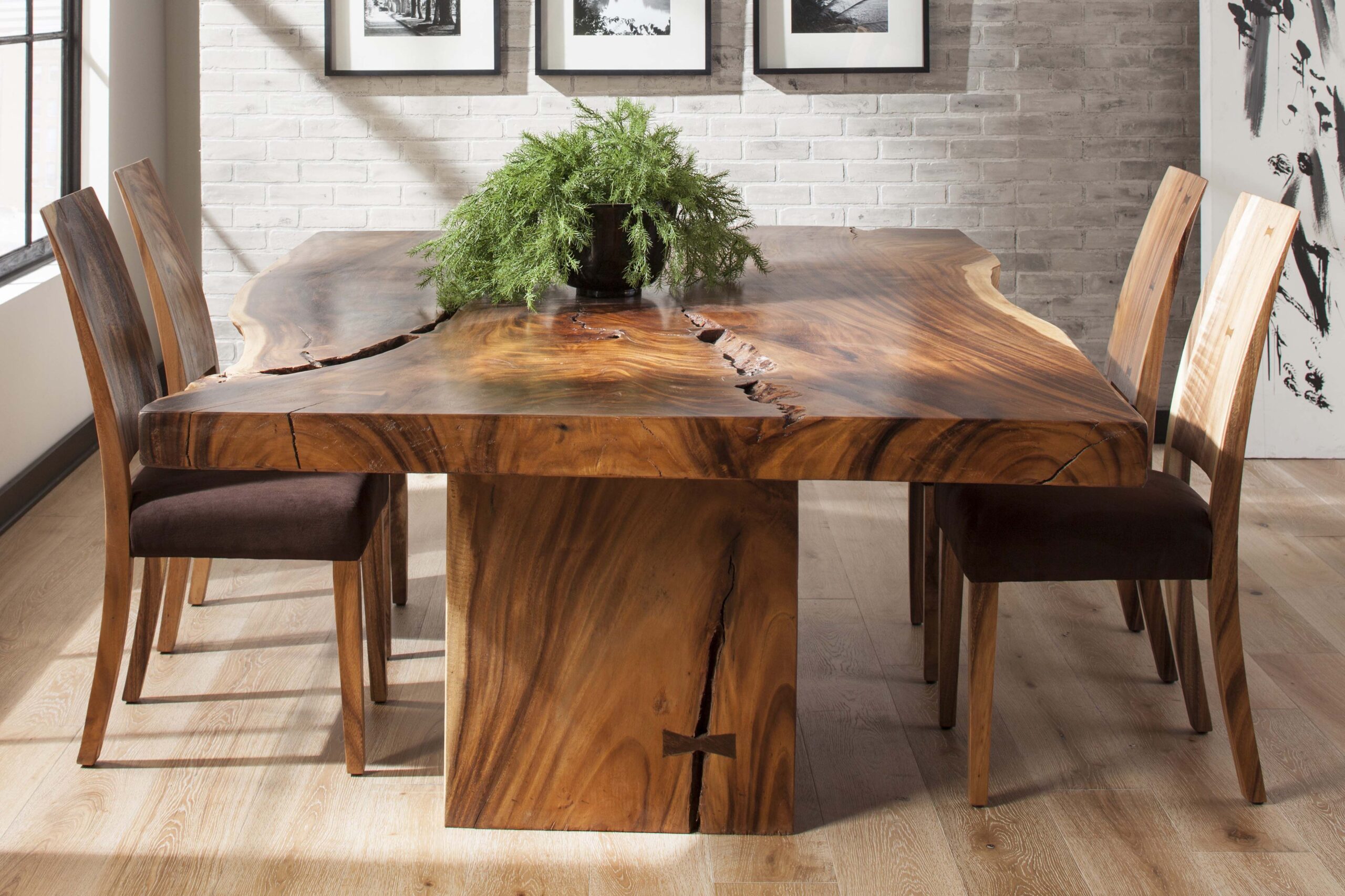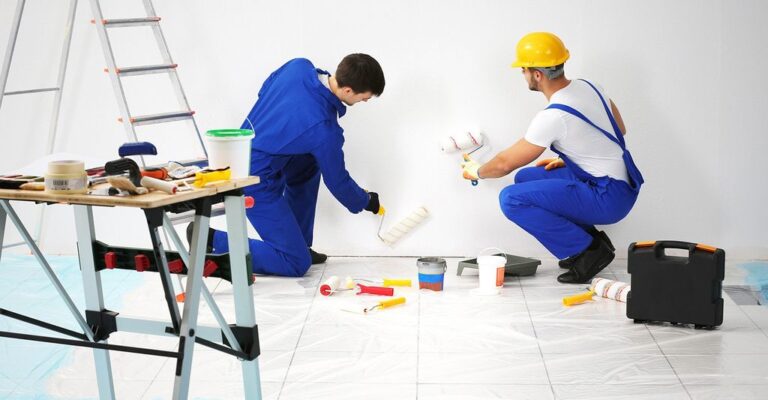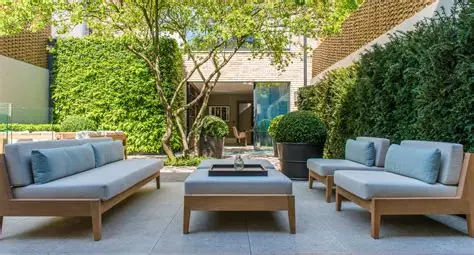Top 7 Solid Wood Dining Tables for a Modern Home
When you’re looking to furnish your dining area in a modern home, choosing the right table is key. A well-designed solid wood dining table not only serves as a central gathering place but also anchors the space visually, adds warmth, and stands up to everyday use. According to furniture design experts, solid wood offers durability and timeless aesthetic appeal compared to manufactured alternatives.
Below, I present seven excellent solid wood dining table models you can consider each with its design focus, benefits, and real-world use-cases. After that, I’ll walk you through how to choose, what to look for, where to buy, and some frequently asked questions.
1. Mercana Viktor 84″ Light Brown Solid Wood Dining Table
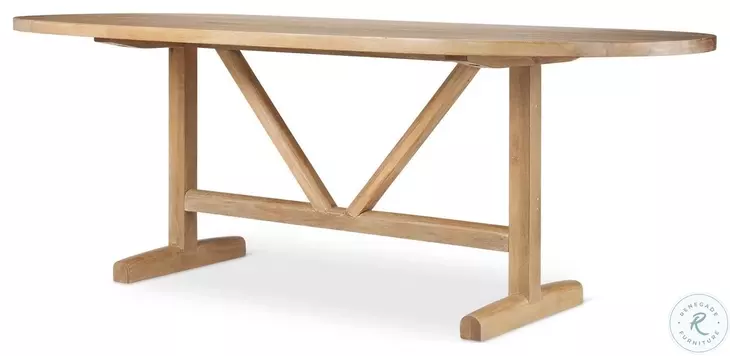
Viktor Light Brown Solid Wood
Details & features
This sizeable 84″ light brown solid wood dining table from Mercana offers a large rectangular footprint ideal for modern open-plan dining areas. As a solid wood piece, it delivers the richness of natural grain and a substantial presence. The light brown finish blends well with neutral or warm tones, making it suitable for contemporary homes.
Real‐world use-case
For a home where you have family dinners or entertain guests regularly, this table provides ample seating space without compromising on style. The solid wood construction means it’s robust less worry about sagging, warping, or visible wear over time as can happen with cheaper panel products.
Problems it solves & why you need it
-
Problem: Many modern dining setups feel cold or generic when using glass or metal-only tables. This table brings warmth and texture.
-
Problem: Some dining tables don’t offer enough seating for larger gatherings. This 84″ length addresses that need.
-
Need: If you’re furnishing a modern home but want the character of real wood (rather than veneer), this is a strong choice.
-
Need: To invest in furniture that lasts and might even appreciate in aesthetic value rather than look dated quickly.
2. Solid Teak Dining Table
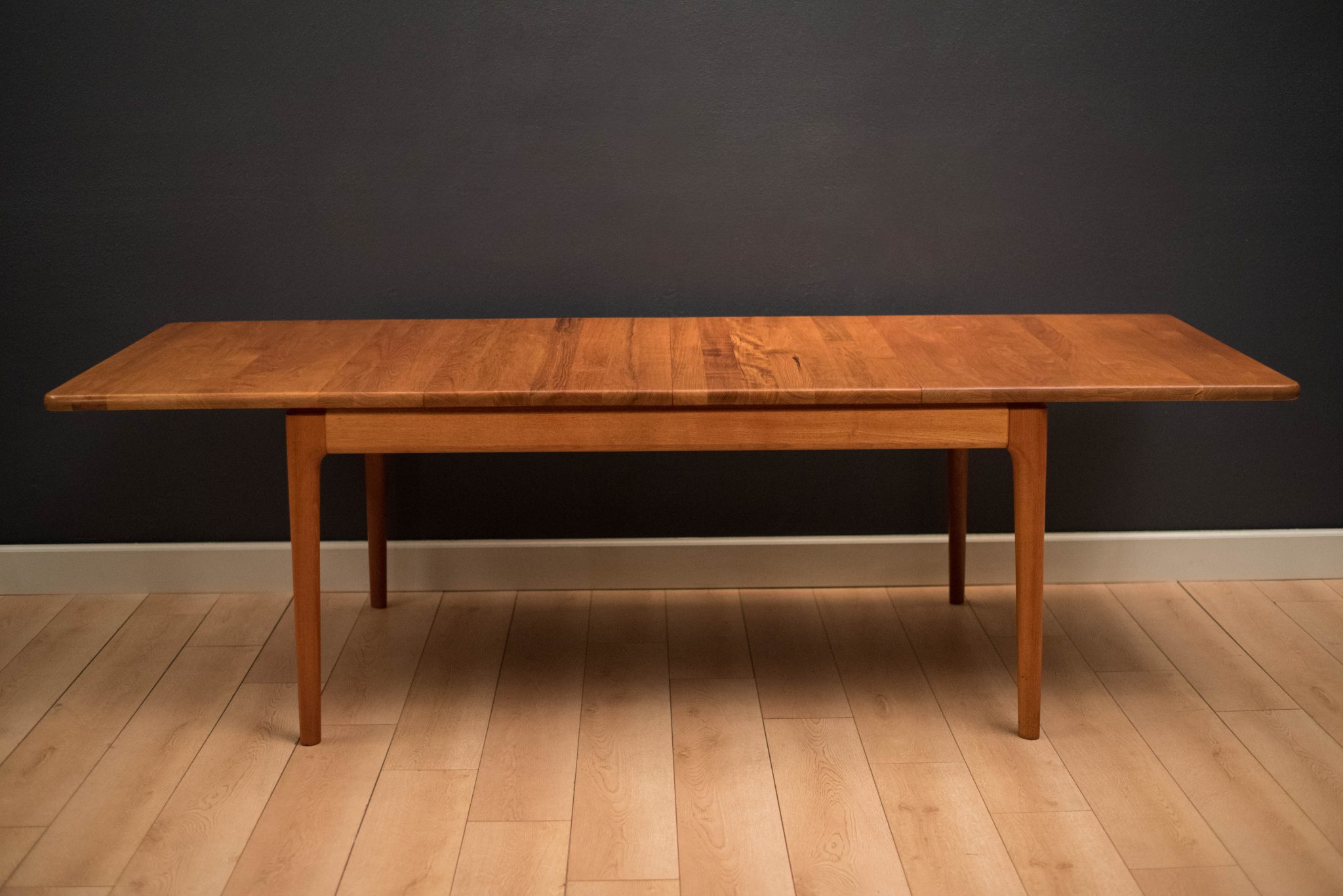
Details & features
Teak is one of the most durable hardwoods for furniture, especially suitable if you may have heavy use, or even an indoor-outdoor space (depending on finish). A solid teak dining table offers rich grain, warm tones, and a sturdy build that aligns with modern minimalist design yet keeps an organic feel.
Real world use case
In a modern home where you may have large windows, natural light, and neutral furnishings, a solid teak table becomes a focal piece. The natural material complements greenery, concrete floors, or metal accents commonly found in modern interiors. You might place it in a dining-kitchen space or an open living-dining area.
Problems it solves & why you need it
-
Problem: Many “modern” tables lack substance and look flat; choosing teak gives you genuine material depth.
-
Problem: If you have children or heavy use (meals, homework, entertaining), you want a table that will last and is less prone to damage. Teak’s durability helps.
-
Need: A table that can integrate with different chair styles, lighting, and décor because the wood tone is versatile.
-
Need: A sustainable, quality piece rather than disposable furniture. Solid wood values increase over time.
3. Mid‑Century Taberu Modern Wood Dining Table (English Ash)
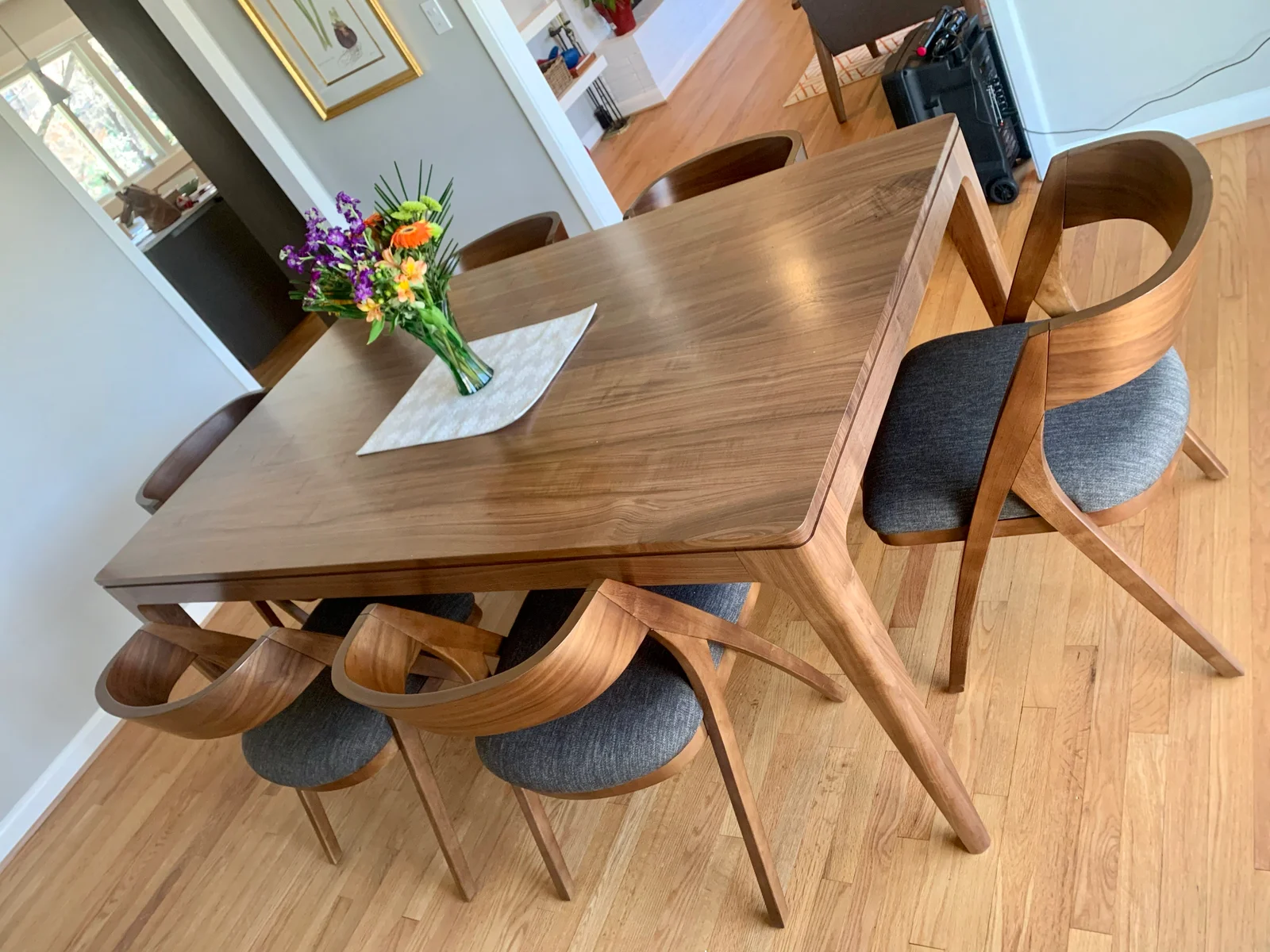
Mid Century Modern Dining Table Used at Robert Mulkey blog
Details & features
This dining table is crafted from English ash, with a mid-century modern silhouette. Clean lines, tapered legs, minimal ornamentation it suits a modern home that appreciates timeless design. Ash wood offers a lighter tone compared to darker woods like walnut, which helps maintain a bright, airy feel.
Real-world use-case
For a modern home with Scandinavian or minimal design influences, this table is ideal. Place it in a smaller dining room or open concept living space where you want the table to blend rather than dominate. The light wood helps keep the space feeling open.
Problems it solves & why you need it
-
Problem: In compact dining areas, a heavy dark table can make the space feel cramped. The lighter ash helps visually expand the area.
-
Problem: Modern homes often include multiple functions in one room (dining, work, play). A streamlined table like this can serve multiple roles dinner, desk, crafts without looking out of place.
-
Need: A versatile piece of furniture that won’t clash with other finishes (metal, concrete) typical in modern interiors.
-
Need: To invest in a piece of furniture that aligns with design-minded buyers rather than purely functional ones.
4. Sidney Circular Walnut Dining Table | Mid Century Modern

Mid Century Modern Dinette Set
Details & features
This circular walnut table combines solid walnut construction with a radial design that emphasizes the grain and natural beauty of the wood. A round dining table encourages conversation and is especially suitable for modern homes where the dining area might be adjacent to living spaces. Walnut gives richness and depth.
Real-world use-case
In a modern loft or open-plan apartment where you want intimate dining and flexible seating, a round table works well. The circular shape allows smoother traffic flow around the table and creates a more inclusive seating arrangement. It also helps when you want to use it as a multipurpose surface.
Problems it solves & why you need it
-
Problem: Rectangular tables can dominate space and make movement around them awkward. A circular table mitigates that problem.
-
Problem: Modern homes often merge dining and living zones; you need furniture that doesn’t block flow—this table works.
-
Need: To accommodate gatherings smaller than large formal dinners, but still maintain high-quality design.
-
Need: A premium material (walnut) that elevates the space beyond budget furniture.
5.Eden Bridge Designs Rectangular Solid Wood Dining Table (Scandinavian Minimalist)
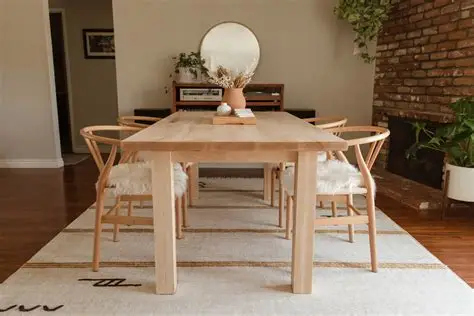
Details & features
This solid wood table features a Scandinavian minimalist style: muted tones, a clean silhouette, and no unnecessary ornamentation. The emphasis is on the wood’s natural quality and craftsmanship. Ideal for modern homes seeking simplicity with quality.
Real-world use-case
In a modern home with mixed materials (metal-accent chairs, glass lighting, concrete floors), this solid wood table provides a grounding element. You might pair it with sleek chairs, minimalist pendant lighting, and a few decorative items letting the table shine.
Problems it solves & why you need it
-
Problem: Many modern dining furniture options compromise material quality for price. This model offers solid wood at a more accessible level.
-
Problem: In the search for minimalism, some furniture ends up looking generic. This table gives you the minimal look and real material quality.
-
Need: A table suitable for daily use (meals, homework, work) yet still elegant enough for guests.
-
Need: A furniture investment that supports the modern interior design goal without sacrificing durability or style.
Bonus – Extendable / Multipurpose Option
Note: Consider an extendable solid wood dining table if you often host large dinners or want flexibility. Many modern dining tables allow leaves or extending mechanisms while retaining the solid wood finish and modern style. According to design sources, extendable tables are increasingly popular for versatile living spaces.
Why Solid Wood Dining Tables are Worth It
Durability and Long-Term Value
Solid wood furniture is known for its longevity and resilience. Unlike engineered wood or veneers, a true solid wood dining table resists warping, can be refinished, and ages well. Experts note that solid wood dining tables “offer durability and long-term value” for homeowners.
In a modern home, where furniture is often part of a larger open-plan living design, investing in durability is smart. You avoid replacement costs, and you maintain aesthetic consistency even as design trends evolve.
Aesthetic Warmth and Material Authenticity
Modern design sometimes risks feeling cold or sterile if everything is glass, metal, and white. A solid wood dining table brings texture, grain, warmth qualities that humanize a space. As one article explains, wooden dining tables “increase the warmth of your dining area” and allow greater adaptability with interior themes.
Material authenticity is also a major draw: furnishings that show natural grain, imperfections, and variation feel more unique. In a modern home, that uniqueness helps anchor the design and gives a bespoke feel.
Versatility for Modern Lifestyles
Modern homes often combine functions: dining, work, social, and multi-purpose. Solid wood dining tables adapt to these changing needs. They can host meals, homework, projects, guests, and more. With careful design, they can also transition from day-to-day use to entertaining mode (especially if extendable). The style of the table also supports varied décor whether Scandinavian minimalism, industrial modern, or mid-century inspired.
Sustainability and Healthier Materials
Choosing solid wood especially from responsibly sourced timber can align with sustainable lifestyle goals. Many solid wood tables are built with kiln-dried, sustainably harvested wood to prevent defects like cracking or warping.
In addition, natural wood surfaces can feel healthier than heavy plastics or synthetic finishes particularly relevant in homes where indoor air quality matters.
How to Choose the Right Solid Wood Dining Table for Your Modern Home
Consider Size & Shape
-
Seating capacity: Match to your regular use plus occasional guests.
-
Room size & flow: Ensure space around the table for chairs and movement.
-
Shape: Rectangular is classic and space-efficient for many seats, and round encourages conversation and better flow.
-
Extendable features: If you host larger gatherings, an extendable table can be beneficial.
Material & Finish
-
Wood type: Oak, teak, walnut, and ash all have different tones, grain patterns, and durability.
-
Finish: Natural, stained, or oiled finishes give different effects; ensure protection against spills, heat, and scratches.
-
Construction: Look for solid slabs or thick solid wood tops rather than thin veneers. Verified by design guides.
Style & Integration
-
Match with your overall interior: A modern home may use metal legs, minimalist bases, or mixed materials choose a table that complements.
-
Consider chair compatibility: The table height, leg placement, and clearance matter for seating comfort and style cohesion.
-
Decide on statement vs. subtle piece: Does the table need to stand out or blend in? Wood tone and form help determine that.
Functional Features
-
Stability and support: Thick tops, solid legs, quality joinery matter.
-
Ease of maintenance: Real wood needs care such as cleaning with soft cloths, avoiding heat/humidity extremes. Many guides outline this.
-
Expandability or multi-use: Some tables have extendable leaves or modular features for versatile use.
Where to Buy (and How)
-
Online retailers offering global shipping: Check shipping to Indonesia, customs/import costs, delivery time.
-
Furniture stores in Indonesia: Visit showrooms if possible to evaluate feel/finish of the wood in person.
-
Local carpenters or custom makers: If you have a specific dimension, shape or wood preference, a local custom solid wood dining table might be viable although cost and lead time may increase.
-
Before purchase:
-
Get measurements and floor space ready.
-
Choose wood type and finish sample if possible.
-
Ask about warranty, return policy, shipping & assembly.
-
Ensure proper care instructions are provided.
-
Frequently Asked Questions (FAQ)
Q1: Is “solid wood” really better than veneer or engineered wood for a dining table?
A1: Yes solid wood typically means the tabletop and legs are made from real timber throughout, rather than a thin veneer over particleboard. This means better durability, better ability to refinish or repair, and often greater resistance to warping or sagging. Design sources emphasise that solid wood offers long-term value.
Q2: What maintenance does a solid wood dining table require in a modern home?
A2: Maintenance typically includes wiping up spills promptly, using placemats or coasters for hot items, avoiding prolonged exposure to direct sunlight or extreme humidity/temperature swings, and occasionally re-oiling or refinishing depending on the finish. Many furniture guides note that correct care ensures longevity and appearance.
Q3: What wood type should I pick for a modern home with frequent use and children?
A3: For frequent use and families, a harder wood such as teak or oak is recommended because of their durability. Teak is especially good if you want something resilient. Choose a finish that hides light wear and grain variation. Also consider shape and size that fits your space best (e.g., round for smaller areas, rectangular for more seating). The examples above (teak, oak) show how material choice and style combine for everyday use.

